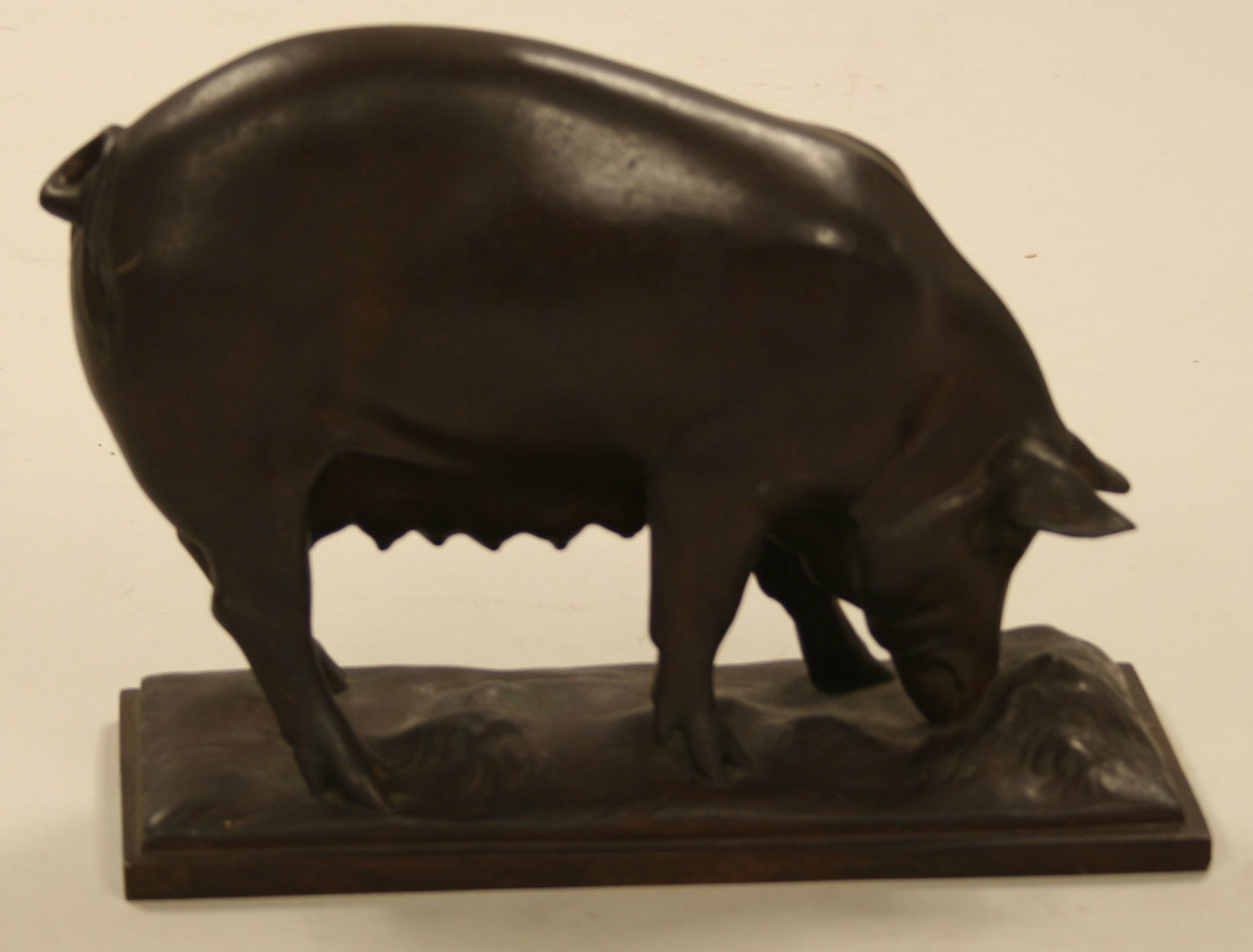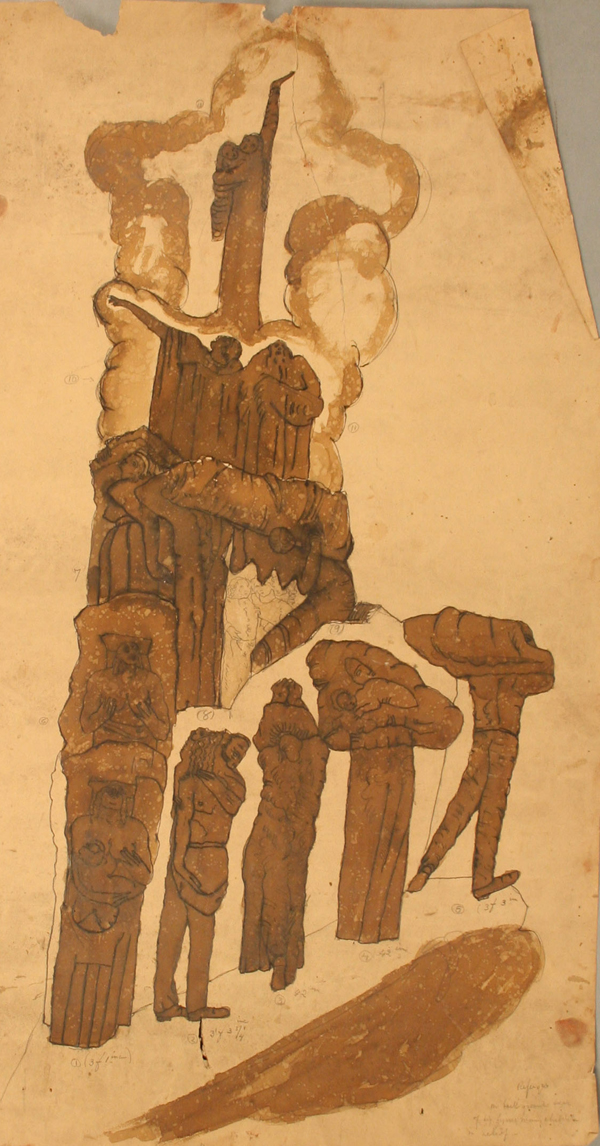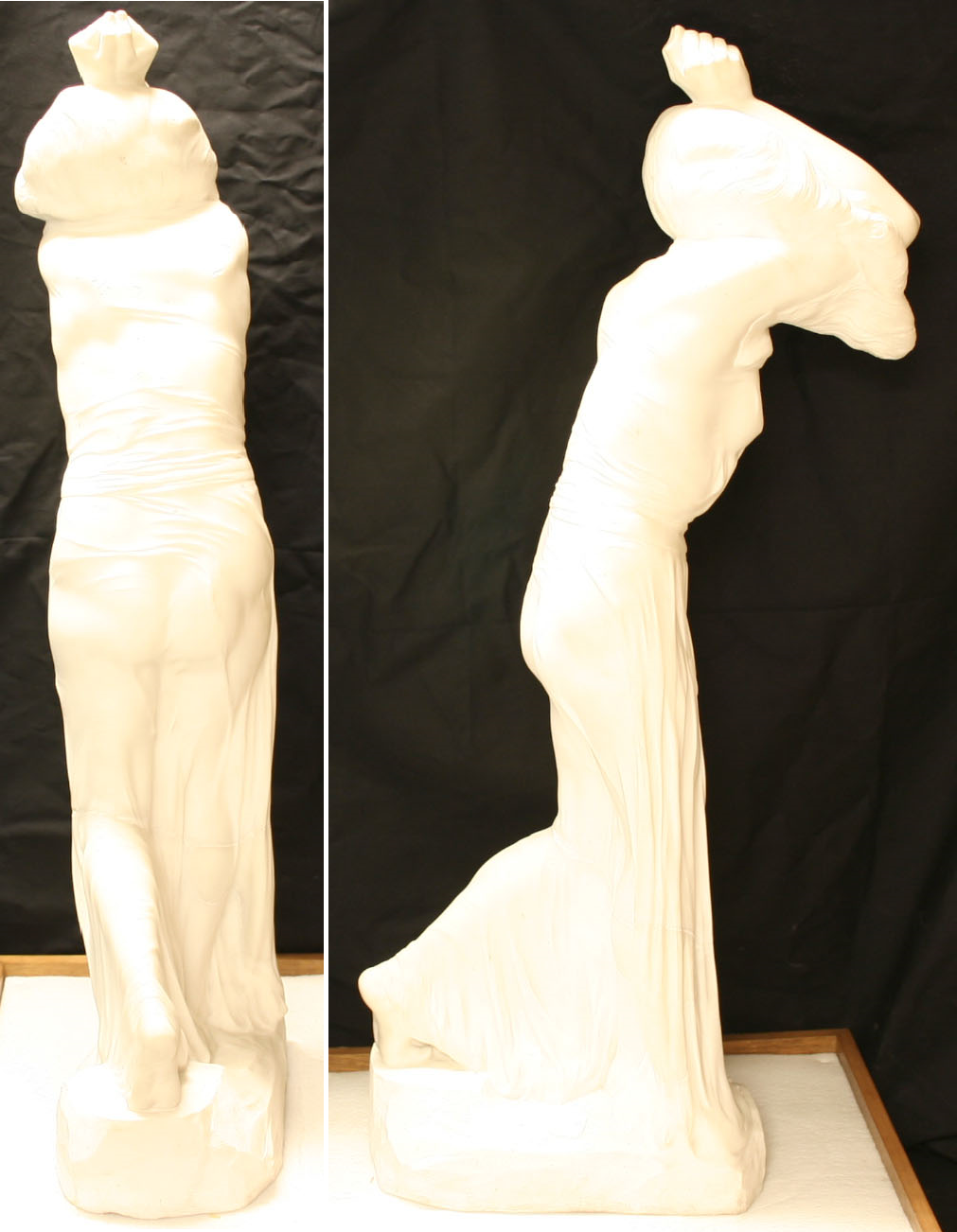The mind searches, the eye scans, the hand seeks; quivering, inquisitive lines belie the uncertainty felt by the artist trying to understand and translate what they are seeing. Through drawing, artists not only describe the subject to the viewer, but to themselves. To achieve this objective, the artist must engage in the process of reproduction in physical movements of the arm and hand coupled with the darting eye. The world is not static; there are the changing currents of wind, the shifting light of day, the breath of an animate subject. The sketcher attempts to capture the movement of the world through an extension of their own musculature onto the page. Observation becomes a participatory endeavor in gaining knowledge on the subject in its environment.
Harry Wickey used most of his sketches as a form of information gathering – what he liked to call his “finding-out drawings.” In 1944, Wickey published his autobiography, thoroughly outlining the development of his artistic process and his philosophy of art. In Thus Far: The Growth of an American Artist, Wickey noted a lifetime of observation and note taking regarding what he saw. Born from an insatiable appetite for information, he interpreted his visual world through the act of sketching. Drawing inspiration from the lives of his family’s farm animals, particularly the pigs, he made several drawings and watercolors that he translated into lithographs and sculptures. He captured the momentum of the hog in quick pulls of the tip of his brush and expressed its rotund weight through darker washes applied to the round volumes of its belly, flanks, shoulders, and jaw. The juncture where the squiggly groundline meets the pig’s nose gives the impression of dirt or hay disturbed by its rooting and snuffling snout.
The bulky volume of the pig (though a sow rather than a hog) and its bodily movement through space, was informed by knowledge gained through initial sketching. The practiced hand of the artist could transfer the movement of the animal from paper to a clay sculpture, which would then be cast in bronze. The motion of the pig’s feet, previously captured in Wickey’s light, deft brushstrokes is present in the way the tips of the front right and back left hooves just touch the ground. Similar to the wash drawing, the sow’s snout carries the motion forward as if it might thrust upwards at any moment, scattering hay or dirt into the air.
George Grey Barnard was a sculptor famous for his early colossal marble and bronze sculptures. A contemporary of Rodin, Barnard’s work consisted of heroic compositions that conveyed moralistic, spiritual, and allegorical ideas in an expressive style with neoclassicist roots. After World War I, he began planning an ambitious national peace memorial consisting of over fifty, nine-foot figures that would dominate the north end of Manhattan.
For nearly twenty years, Barnard worked on various sections of the memorial, making numerous sketches and sometimes making changes and adding notes for reference. Barnard devoted most of his efforts to a section he called The Rainbow Arch. Pictured here are his plans for the right side of the arch which depicts war refugees climbing a mountain to the foot of a rainbow. Each drawing fills a 40 x 18 inch page, the blocky forms of the figures embodying the mass of the proposed piece. It is unclear which sketch came first, although the character of each varies. In the image on the right, he added a relief of children into the center of the sculpture, noting the change in pencil at the bottom right corner. The thinner lines of the image on the left, coupled with the variations in tone, give it a more refined and dimensional appearance; conversely, the thicker lines and monotone coloration of the right image flattens the figures.
Although Barnard’s elaborate memorial was never fully realized, he completed a 100-foot-high plaster mockup of The Rainbow Arch, which was exhibited at the Grand Central Art Galleries in 1935. He also produced a scaled-down sculpture of a figure appearing in the middle of the bottom row of the arch’s right side. This figure faces away from us towards the wall in the sketch, but as a freestanding sculpture, we are able to contemplate it in three dimensions. The face is obscured by fabric that envelopes the figure up and over the pack on its head. Despite the lean musculature of the marble body, one might assume the figure is female due to the delicacy of the long, clinging garment. But the sketch complicates this assumption. In the drawing, a hobnail boot pokes out from beneath the skirt of the blocky figure. By obfuscating gender and orienting the body towards the wall rather than ascending the arch, Barnard may have intended the figure to embody all refugees. Barnard’s sketches resemble a markedly rough outline for a finely detailed product. Like many designers, his process may have been intentionally ambiguous. Loose drawing as a means of problem solving, provides the flexibility for perceptual reorganization and consequent new insights, finding new figures and relations, and new interpretations.






